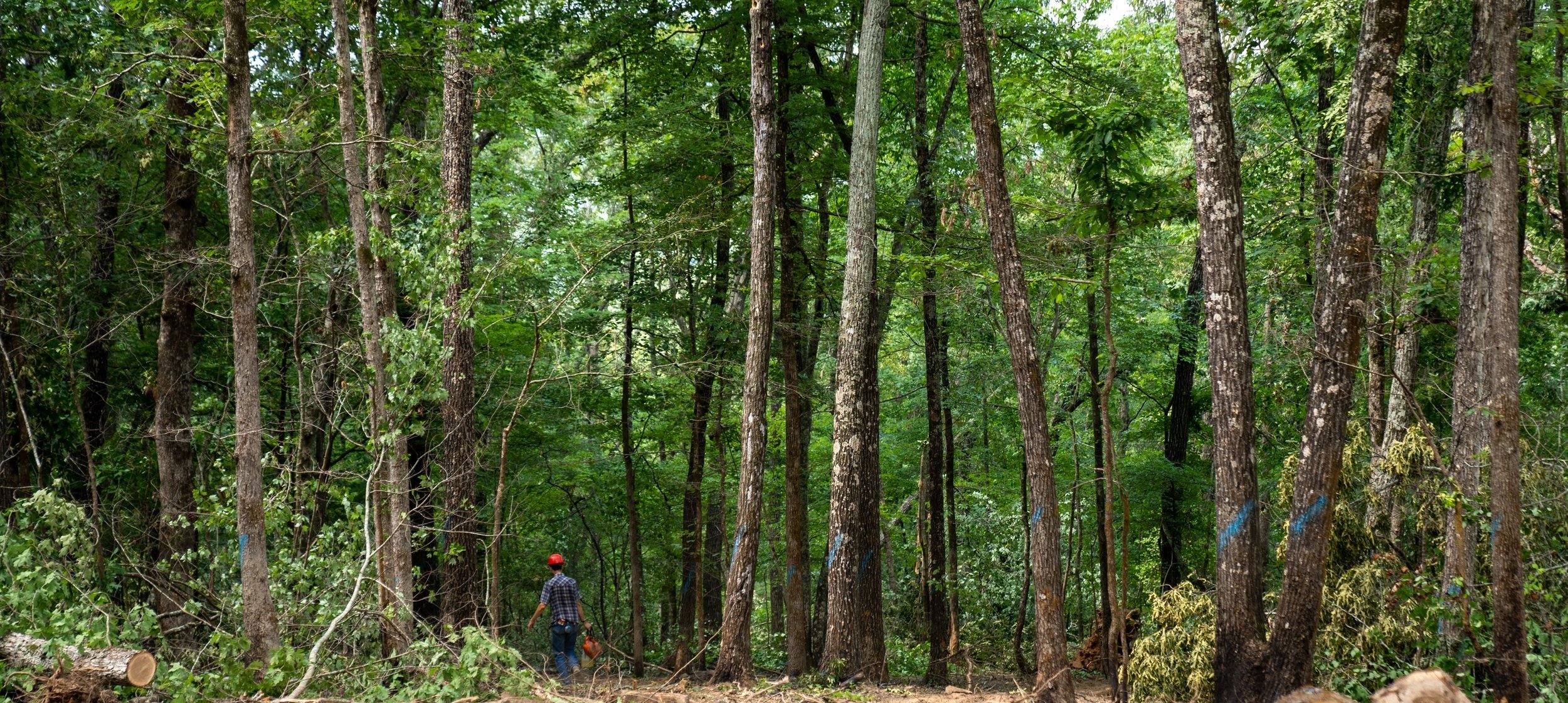
Selection Systems
It’s all in the details.
When a landowner decides to harvest timber there are a few key decisions to be made. Which trees to cut and which trees to leave is a big one. Here is a description of the two primary harvest types that we offer. Whether you are ready for a substantial return on your investment now or you are interested in long game management for optimal forest health and productivity, your land is in good hands.
Diameter Limit cutting
In this system trees to be harvested are selected based on diameter, whether that be measured at breast height (DBH) or on the stump. A common diameter might be 14” DBH or 18” on the stump, meaning all trees that size or larger within the stand would be harvested. Trees smaller than the chosen diameter are left to grow. This system does not require intensive forestry work on the front end of logging, such as evaluating and painting individual trees to be cut. If used in a naturally un-even aged stand where various size classes are present this can and has been a suitable practice for many years. The drawback is that if this system is applied to a stand of even-aged timber or trees of a uniform size it results in too heavy of a cut and can remove important genetics from the woods. This type of harvest is currently the convention for select cut logging in the Ozark region.
Single-Tree Selection
Unlike diameter limit cutting , in this type of management each individual tree within the stand is evaluated and marked for harvest based on a multitude of criteria, including vigor, species, maturity , and spacing . The goal is to thin the stand to the optimum density by removing trees that have reached their full growing potential or are of a less desirable species/grade, leaving the most vigorous trees to populate the woods. Typically, mature trees of high quality are harvested only when there is a strong representation of like-quality young timber at the site. At any given time trees of all size classes, from seedlings, saplings, poles and saw timber should be present in the woods. This type of harvest creates small gaps in the canopy and stimulates strong vertical growth. This makes for a robust, resilient forest and creates excellent opportunity for income at regular intervals for the timberland owner. Single-tree selection or un-even aged management is a tried and true, science based system.
We consider the Pioneer Forest to be the gold standard for silviculture in the region and base our methods of off their practices .




